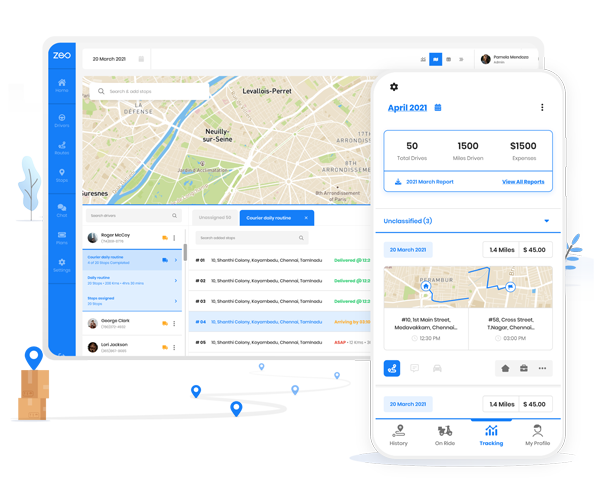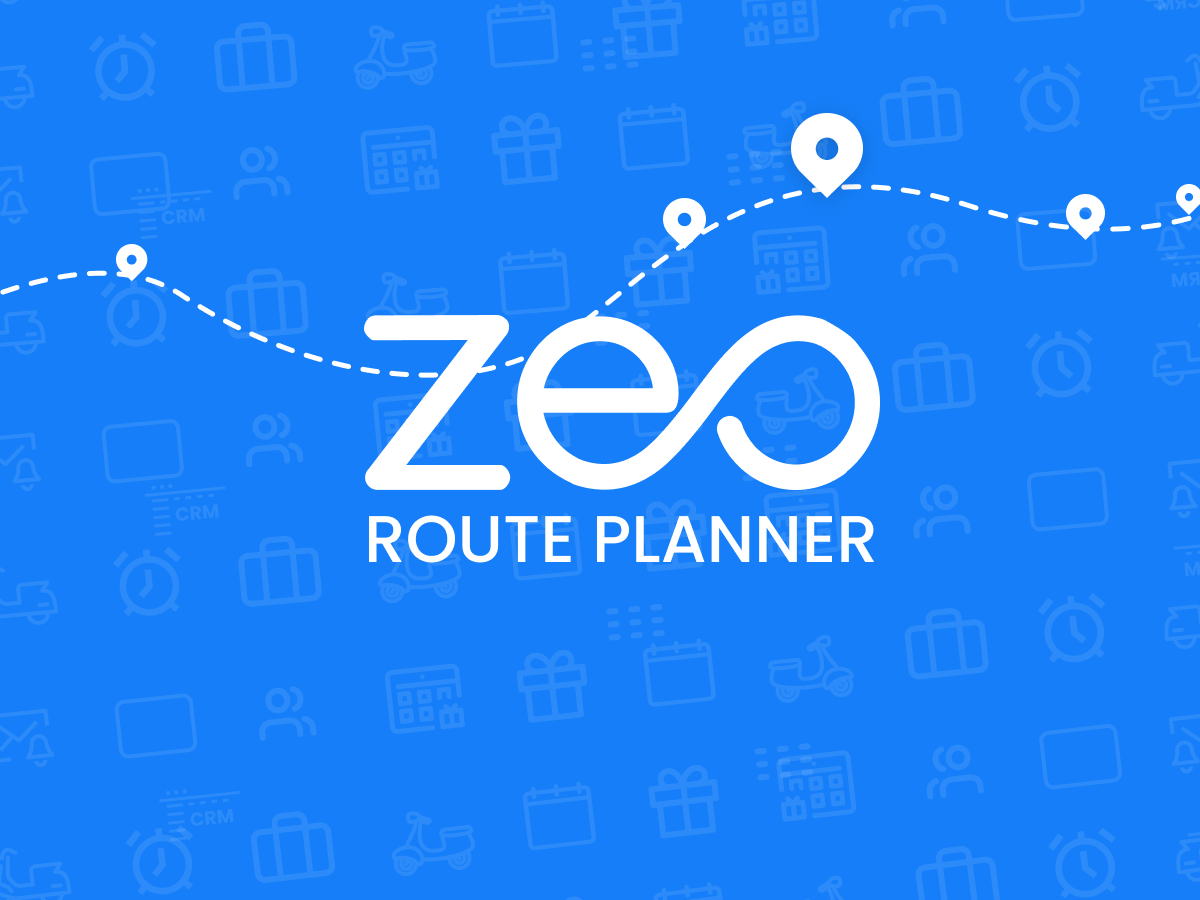Updated on: July 21, 2025
The call for eco-conscious business practices has never been louder in the plantation sector. Industries across the board are embracing the idea that profitability and sustainability can, and should, go hand in hand. In the plantation industry, where operations span acres and resources are meticulously managed, there’s a unique opportunity to streamline processes while actively reducing environmental impact. Here, efficient route planning and resource allocation aren’t just operational strategies; they’re essential steps toward building a greener, more sustainable future.
Why Optimized Route Planning & Resource Allocation is Crucial for Plantation Operations
Route planning and resource allocation are the backbones of fleet management solutions in plantation work. Here’s why they matter from both business growth and operational benefit perspectives:
- Improved Resource Utilization
Route optimization ensures every vehicle and resource is used to its true potential, leaving no room for wastage. In plantation work, where every trip counts, optimizing routes means fewer trips and faster turnarounds. This results in lower costs and better allocation of time and energy, allowing plantation managers to make the most of what they have without unnecessary strain on resources.
- Enhanced Time Management
The process of streamlining plantation operations is often highly time-sensitive. From planting schedules to harvest deadlines, timing can make or break a season. With optimized scheduling, fleet resources are maximized so that critical tasks are completed precisely when they’re needed. This precision avoids delays that could lead to spoilage or missed opportunities, keeping production on track and maximizing yield quality.
- Increased Efficiency
When vehicles and personnel are strategically allocated, efficiency skyrockets. The right resources get to the right places without detours or downtime. In plantation operations, this means every job, from fertilization to delivery, is done with maximum efficiency. It’s the difference between operating reactively and proactively, ensuring that tasks are completed in the most resourceful way possible.
- Cost Savings
Reducing fuel usage and travel time isn’t just good for the environment; it’s a win for the budget too. For plantations, where margins can be thin, cutting operational costs allows for reinvestment in quality and sustainability initiatives. Optimized routes turn cost-saving into a continuous cycle of improvement, where every dollar saved helps support greener practices.
Environmental Benefits of Streamlining Plantation Operations
Optimized routes and resource allocation play a major role in streamlining plantation operations that bring significant environmental benefits to businesses. Here’s how:
- Lower Fuel Consumption
Route Optimization reduces the need for long, winding trips across large plantation areas, directly reducing fuel usage. In a plantation setting, where fuel is often a significant part of operating costs, this approach lowers expenses and reduces emissions. Every gallon saved means a lighter carbon footprint and more sustainable practices for the future.
- Reduced Greenhouse Gas Emissions
With fewer miles driven, there’s a notable reduction in CO₂ and other greenhouse gas emissions. By cutting down on travel time, optimized route planning minimizes air pollution that contributes to climate change. For plantations committed to eco-friendly practices, this means a smaller environmental impact and a more sustainable reputation. - Minimized Vehicle Wear and Tear
Shorter, optimized routes mean less wear and tear on vehicles. Fewer repairs mean less waste from vehicle parts, and a longer lifespan for each truck reduces the environmental costs of manufacturing replacements. This also means reduced spending on maintenance, creating a cycle of savings that benefits both the budget and the planet. - Efficient Use of Resources
Smart resource allocation means every driver, vehicle, and piece of equipment is utilized to its full potential, avoiding unnecessary use and reducing waste. This efficient approach keeps plantation operations in harmony with nature, ensuring resources are used sparingly and sustainably. - Waste Reduction
On-time deliveries reduce spoilage, particularly for perishable plantation products. By getting goods where they need to be, exactly when they need to be there, optimized routes ensure a high-quality product without excess waste. This efficiency helps plantations improve profitability while also supporting sustainability goals.You might like to read: Eco-Friendly Waste Collection Practices: A Comprehensive Guide
- Support for Biodiversity
Reduced vehicle movement means fewer disturbances to the local environment, allowing natural habitats to thrive. For plantations located in sensitive ecological areas, this means minimizing the impact on flora and fauna, promoting biodiversity, and supporting healthier ecosystems.
By focusing on environmentally friendly fleet management solutions, plantation operations can protect the earth while enhancing productivity. It’s a win-win approach that supports both business and nature.
How Zeo Route Planner helps
Zeo Route Planner is designed to simplify the process of streamlining plantation operations, aligning them with eco-conscious goals without sacrificing productivity. Zeo combines smart technology with sustainability features to create a fleet management solution that works in harmony with the environment. Zeo route planner employs algorithms that automatically create the shortest, most efficient routes, reducing fuel use and cutting emissions. This allows plantation businesses to streamline their operations without a significant environmental impact.

increase fuel savings
Hassle Free Deliveries & Pickups!
Optimize routes with our algorithm, reducing travel time and costs efficiently.
Get Started for Free
Moreover, Zeo allocates resources in a way that maximizes efficiency, ensuring every vehicle and driver is used optimally. This prevents overuse and wastage, supporting sustainable resource management practices. With Zeo, plantation managers have real-time access to fleet data, enabling them to make on-the-spot decisions that avoid unnecessary travel or resource use. This active management reduces emissions and boosts overall efficiency.
Conclusion
For plantation businesses aiming to thrive in a sustainable future, adopting modern route planning solutions is no longer optional, it’s essential. Embracing tools like Zeo Route Planner empowers your business to operate smarter, not harder, by streamlining logistics, reducing operational costs, and aligning with eco-conscious goals.
With Zeo, you gain a partner that understands the unique demands of the plantation industry and supports your growth with efficiency and environmental responsibility in mind. Choosing Zeo isn’t just about optimizing routes; it’s about creating long-term value, building customer trust, and strengthening your commitment to sustainable practices. Take the step towards smarter, greener operations, schedule a demo with Zeo experts.

Are you a fleet owner?
Want to manage your drivers and deliveries easily?
Grow your business effortlessly with Zeo Routes Planner – optimize routes and manage multiple drivers with ease.

increase fuel savings
Hassle Free Deliveries & Pickups!
Optimize routes with our algorithm, reducing travel time and costs efficiently.
Get Started for Free




















